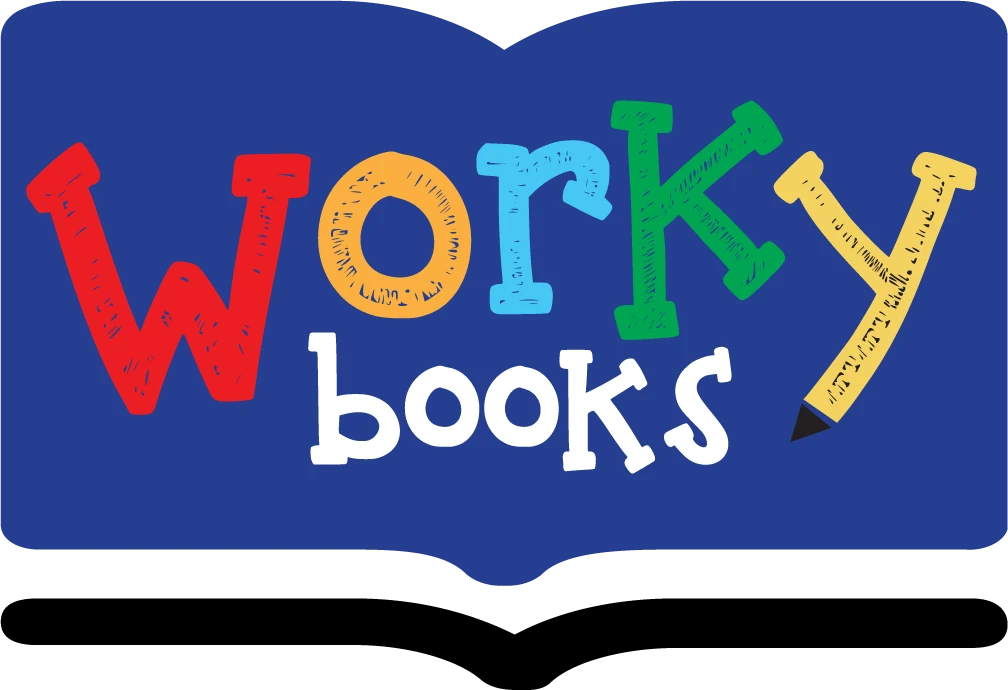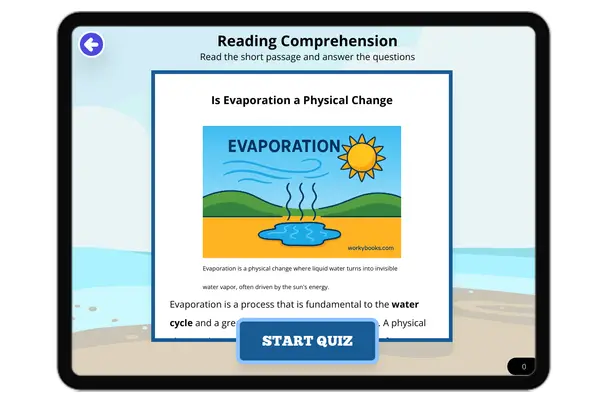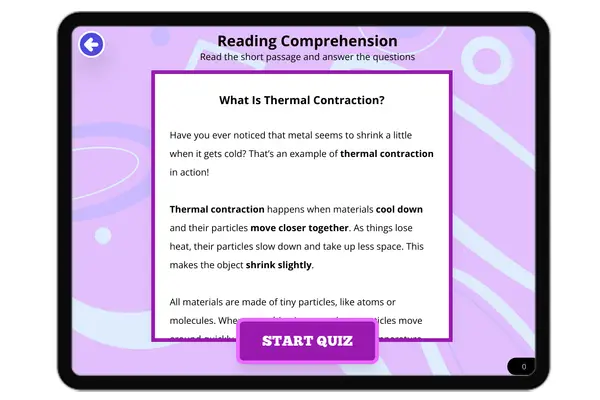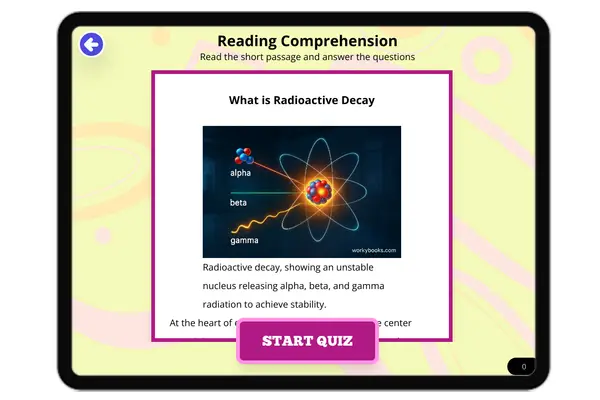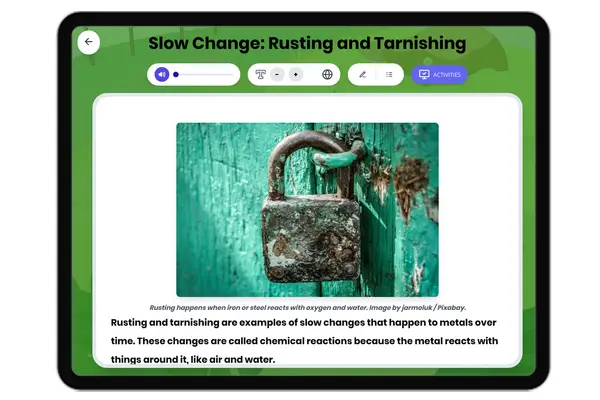Rapid Change: Boiling — Reading Comprehension
Premium Resource
Grades
- 3
- 4
- 5
- 6
PRINT+DIGITAL RESOURCE
This learning resource is available in interactive and printable formats. The interactive worksheet can be played online and assigned to students. The Printable PDF version can be downloaded and printed for completion by hand.
About This Reader
This engaging Grade 4-5 science passage explores 'Rapid Change: Boiling', aligning with NGSS standards for understanding matter and its interactions. Students will learn how boiling is a rapid change from liquid to gas, the role of temperature, and real-life applications such as cooking and the water cycle. The passage introduces and defines key vocabulary like evaporation, condensation, and boiling point, with clear examples and simple explanations suitable for upper elementary students. An Interesting Fact section adds curiosity, while a detailed glossary supports vocabulary development. The resource includes a multiple-choice quiz and writing activities that foster scientific thinking, comprehension, and connections to everyday life. All content is audio integrated, making it accessible for diverse learners. This resource is perfect for classroom use, homework, or science centers, and provides a comprehensive, standards-aligned exploration of how boiling affects matter and our daily experiences.
Perfect For:
👩🏫 Teachers
- • Reading comprehension practice
- • Auto-graded assessments
- • Literacy skill development
👨👩👧👦 Parents
- • Reading practice at home
- • Comprehension improvement
- • Educational reading time
🏠 Homeschoolers
- • Reading curriculum support
- • Independent reading practice
- • Progress monitoring
Reading Features:
📖
Reading Passage
Engaging fiction or nonfiction text
❓
Comprehension Quiz
Auto-graded questions
📊
Instant Feedback
Immediate results and scoring
📄
Printable Version
Download for offline reading
🔊
Read Aloud
Voice-over with word highlighting
